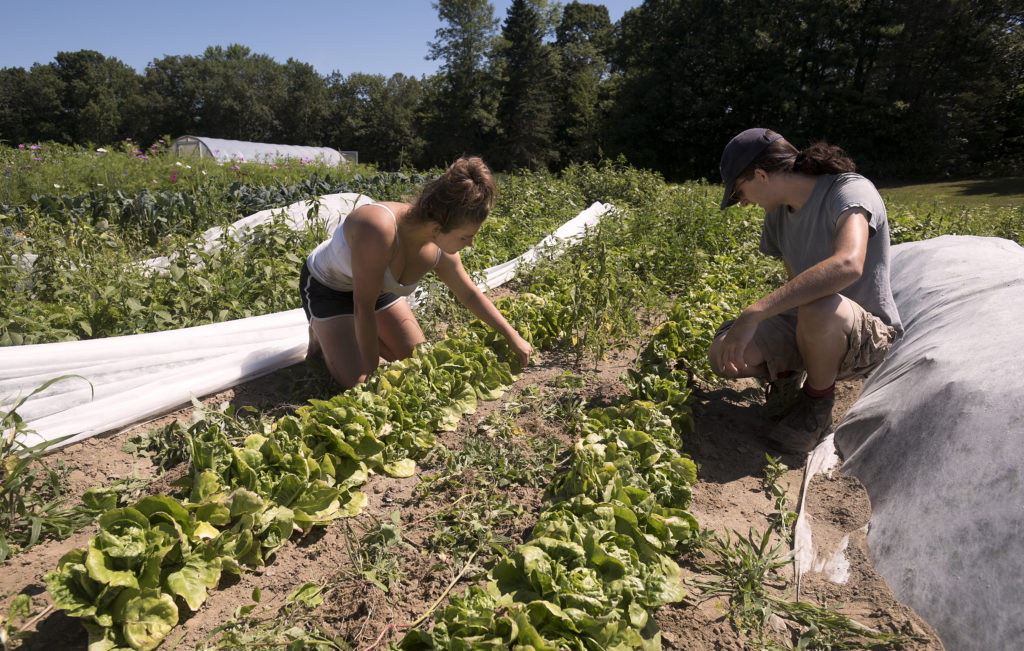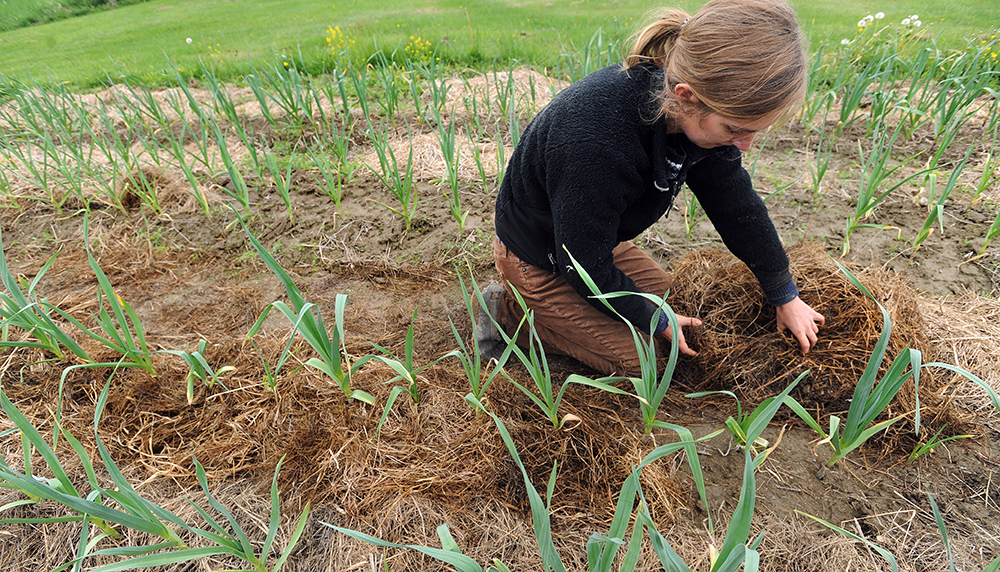What is regenerative agriculture?

With the endless cycles of pesticides, fertilizers and tilling, agriculture can take a toll on the environment and the ecosystem of your land. Regenerative agriculture aims to change that.
Regenerative agriculture is an approach to farming that works with the natural systems to repair the landscape, soil structure, ecosystem biodiversity and climate for the sake of long term productivity and sustainability. It brings together many other sustainable agriculture methods to achieve the goal of restoring land health.
“[Regenerative agriculture] invokes numerous different practices,” said Jonathan Lundgren, agroecologist and research entomologist at the Ecdysis Foundation and Blue Dasher Farm. “It is more defined by principles and outcomes. There are a lot of ways to obtain a regenerative farm.”
The principles of regenerative agriculture
The overarching principles that define regenerative agriculture differ depending on who you ask. In general, Lundgren boils it down to reducing tillage, protecting the soil, maintaining roots in the soil, promoting biodiversity and integrating livestock with crop production.
“When people apply those principles and make decisions with those principles in mind, the systems work,” Lundgren said. “It just seems like those are unifying frames of mind or goals.”
The principles of regenerative agriculture encompass a number of other sustainable agricultural practices, including cover crops and conservation tillage methods like no-till.
“Regenerative agriculture follows soil health principles,” said Didi Pershouse, president of the Soil Carbon Coalition. “The bare-bones is reducing or eliminating tillage and not disturbing [soil] structure. Keeping plants growing on the land as much as possible [is] probably the most important, like cover crops or perennial crops.”
Pershouse said she likens soil to bread when thinking about regenerative agriculture. Unhealthy, non-regeneratively farmed soil is like flour: powdery and loose, unable to retain moisture and easily washed off.
“When you practice more regenerative forms of agriculture, you’re regenerating life in the soil. All of those microbes and earthworms leave slimes and glues that stick together and creates this spongy structure that holds together,” Perhouse explained. “It also filters water and can hold and absorb a tremendous amount of water.”
The same metaphor applies to tilling.
“If you put that bread in a blender, it’s not going to have that structure or function anymore,” Pershouse laughed.
The concept of regenerative agriculture is also constantly evolving to include other aspects of sustainability. Sometimes, the principles of regenerative agriculture also consider social and economic sustainability.
“Depending on who you talk to, some people will talk about regenerative agriculture in terms of people being paid a living wage, animals being treated well [and so on],” Pershouse said. “Different organizations that have come up with different standards for regenerative agriculture. It’s still really evolving.”
The benefits of regenerative agriculture
Over time, regenerative agriculture practices increase the health and productivity of the land. The crops produced on land farmed regeneratively will be healthier and more nutrient-dense.
“Food grown this way is going to be healthier,” Pershouse said. “It’s going to have less pesticide residues and have higher nutrient density. The plants are more resistant to diseases and more resistant to fungal organisms.”
Building healthy, resilient land will also save you money on agricultural inputs.
“I sometimes call it freedom farming [because] you’re freeing yourself from being dependent on companies that sell seeds or fertilizers or pesticides,” Pershouse said. “There’s the financial independence piece of it.”
Regenerative agriculture also has ripple effects on the rest of your land. Pershouse said landowners that practice regenerative agriculture are less likely to suffer property damage from flooding and erosion.
“When you have healthier soil, everything else in the landscape is going to work better,” Pershouse said. “You’re really increasing the value of the land both for yourself but also for future generations.”
The challenges of regenerative agriculture
The transition to applying regenerative agriculture principles on your land can be challenging and may require some initial costs.
“It can involve a change in equipment,” Pershouse said. “For example, if you’ve been using tillage and you’re going to switch to a no-till system, you might need to get a roller-crimper, a no-till drill or that kind of thing.”
Regenerative agriculture also requires a fair amount of knowledge and advanced planning.
“It can take a little thinking as to how you’re going to replace the things you used to do with different methods,” Pershouse said.
Over time, though, experts say that applying regenerative agriculture practices will reduce your workload as your land regenerates to work with natural processes instead of against them.
“The thing I like about regenerative agriculture is that you’re working with nature’s own strategies instead of working against nature,” Pershouse said. “Once you figure that out, it gets a lot easier, but that transition can be hard.”

Getting started with regenerative agriculture
To get started with regenerative agriculture, do your research.
“I think the first steps would be to start learning more about these systems,” Lundgren said. “Regenerative farming is very knowledge-intensive.”
Pershouse said that the National Resource Conservation Service is also a great resource in terms of learning how to apply principles of soil health. Lundgren suggested attending field days of farms that practice regenerative agriculture or regenerative agriculture group meetings to get started, as well as conducting your own research online.
“YouTube is actually one of the best education sources out there for regenerative farming,” Lundgren said.
As with the principles of regenerative agriculture, the approaches to getting started vary depending on who you ask. Pershouse suggested replacing one old technique with a regenerative technique at a time to ease the transition.
“I often say cover cropping is often an easier way in[to regenerative agriculture] for many people, especially if its a cover crop that’s harvestable,” Pershouse said.
Lundgren, on the other hand, said that even if you are just starting out, you may want to consider applying all the techniques at a small scale and expand over time.
“What happens is farmers are like, ‘I love the idea of regenerative farming, I’m going to do no-till,” Lundgren said. “It’s seldom sufficient to reap the maximum benefits of it [so people get discouraged]. I recommend adopting a whole system.”
As a concept, regenerative agriculture is still evolving, so you will need to experiment to figure out what works best for your land.
“A lot of it is experiential at this point,” Lundgren said. “It’s learning from what other farmers are doing and adapting those experiences to your operation. We’re learning very rapidly what works and what doesn’t work to try to soften that transition process.”
Regardless of your approach to regenerative agriculture, Lundgren said to keep your head up through the trials and tribulations.
“Don’t give up,” Lundgren said. “There’s always challenges whenever you’re adopting new approaches to things. It takes a certain perseverance.”

Great article! This is something that should be done at every level because we suffer the effects of not doing it at the kitchen table with the loss of minerals in our food supply.